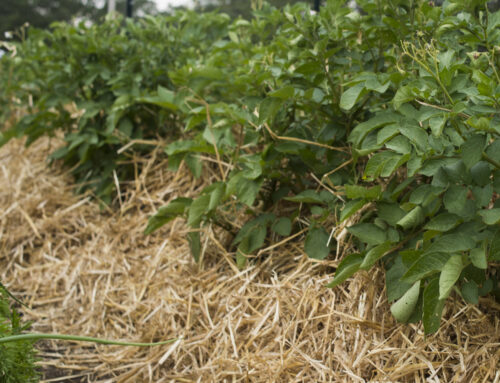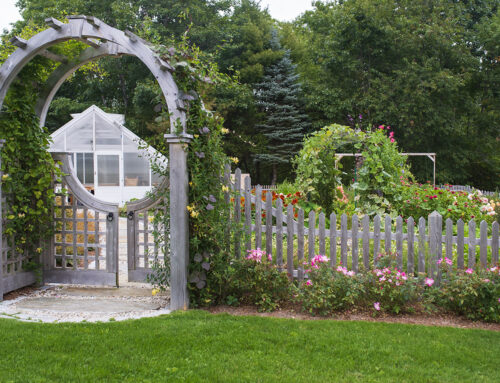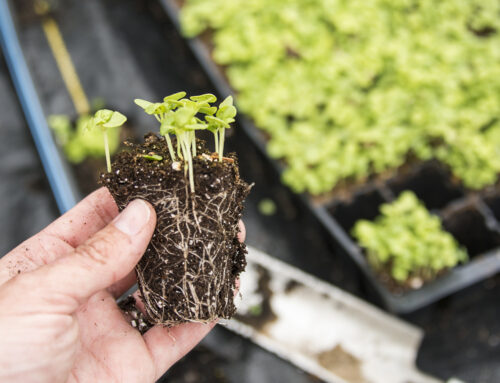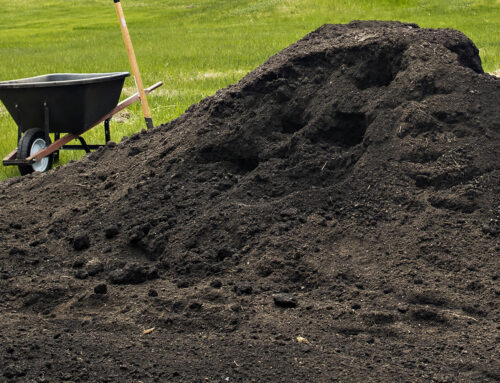Mycorrhizae fungi is a powerhouse. Let me tell you all the ways this teeny-tiny little fungus will change your garden for the better.
Usually when you hear about a fungus in the garden, gardeners panic. Not so with mycorrhizae. Mycorrhizae is a symbiotic fungus, meaning it’s a win-win relationship for both, the fungus and the plant.
The Symbiotic Relationship
Mycorrhizal fungi attach themselves, and colonize the host plant’s roots. Effectively this massively extends the plant’s reach underground, allowing them access to increased water and essential nutrient sources, like nitrogen and phosphorous, along with improved absorption. The fungi happily feeds on the carbohydrates the plant formed during photosynthesis. As a delightful added benefit, the mycorrhizal fungi eat the fungi that causes damping off in seedlings.

This relationship between the mycorrhizae and plant, tremendously increases the root surface area, or root radius, by 10-100 times! Improved access to water and nutrients—provided by the mycorrhizae—results in healthier, more robust plants which are better able to defend against drought, pests and disease.
Benefits of Mycorrhizal Fungi:
- Quicker root establishment.
- Significantly expanded root surface area.
- Increased water and nutrient uptake from the soil.
- Enhanced top growth (more fruit and flowers).
- Improved overall plant health.
- Better drought and environmental stress tolerance.
- Boosts root pathogen (nematode and unwanted fungi) tolerance.
- Higher pest and disease resistance.
- AND improved soil structure.
Mycorrhizae and Young Plants
When propagating—by sowing seeds or by cuttings—my go-to potting mix is, Pro-Mix BX with Mycorrhizae. By the way, this is NOT a sponsored post, I just love this product so much I want to share it with you. I used to make my own potting mix, but over time as my production scaled up, I found it more efficient to purchase this as a general purpose potting soil. I use it to start everything! The peat moss keeps seeds and young roots moist, while the vermiculite and perlite provide ample airspace and drainage. However, it’s the addition of mycorrhizae that makes this mix outstanding. When young little seedlings start developing their roots, the mycorrhizae is there to give them that added boost.

When transplanting into the garden, you can add—or in fancy terms, inoculate—your beds. I apply mine a couple days before planting if time allows. As a no-dig gardener (check out my post on No-Dig HERE), I spread the granular dust on top of the garden bed, then cover with my annual inch or so of compost.
Bio Organics has some great commercial products, and the Josephine Porter Institute offers some great field and garden sprays. Or, you can simply go to your local garden center or nursery, and ask for mycorrhizae, they’ll have it. No need to worry about any special brand, just get what’s locally available and you’re good to go.
Encourage Mycorrhizae in the Garden
Improved soil structure is an added garden benefit of mycorrhizal fungi. The extended root area does more than increase the radius in which plants access water and nutrients. The networks shared between the plant roots and fungi create a richer environment for soil microbes and bacteria.
Overwintering roots allows the mycorrhizae to live on through the winter, and jump to the new annuals’ roots planted the following spring. Each year the inoculated soil—and fungi— will live on and improve your soil structure.

Don’t leave any garden space bare. Use cover crops to provide a constant root source, which provides a home and energy in the form of carbohydrates. Cover cropping works similar to overwintering roots, it’s all about keeping your mycorrhizae population happy and thriving. Crimson clover is a favorite cover crop because it’s also a nitrogen-fixer, leaving the soil full of nutrients as well as mycorrhizae. Alfalfa, also a nitrogen fixer, and despite being a slow grower, it brings up a significant amounts of nutrients to the garden level.
You can even feed the mycorrhizal fungi in your perennial beds. Mulch with wood chips—ONLY in your perennial beds (annuals and vegetables are better served by an organic mulch like straw or seaweed). The wood chips provide food for the fungi, which encourages them to thrive and do their thing.
Mycorrhizae FAQ:
Q. When should I apply mycorrhizal fungi to my vegetable and flower beds?
Mycorrhizae are typically used when sowing seeds, at transplanting, or when starting a new garden bed.

Two weeks before planting, I’ll start inoculating my garden beds. Mycorrhizae is spread on the surface of last year’s bed, then topped with my annual 1” of compost. Since I practice no-dig in my gardens, I don’t “work” it in with shovels. The two week lead-time gives the soil microbes a chance to “work” it into the soil, so it will be ready to plant.
Q. Will the use mycorrhizal fungi impact what other amendments I can use in the garden?
The short answer is no. As an organic gardener I limit my “fertilizers” to compost and natural soil amendments, which are fine—and even encouraged! Things like fish emulsion, compost or comfrey tea or bonemeal are all safe to use with mycorrhizal fungi.
However, I do not recommend using synthetic plant foods or foliar sprays since they are known to negatively impact microbial activity.
Q. When looking up mycorrhizal fungi, I came across a selection of types. Which one should I choose for my garden?
While there are three type of mycorrhizal fungi, vegetable, herb and flower gardeners need only be concerned with the arbuscular mycorrhiza. These fungi have over 300 species and cover most vegetables, herbs, grasses, legumes, fruit trees, cane fruit and many forest species. This is what is most commonly available at garden centers and nurseries, so you shouldn’t have too much trouble.
Q. How long will the leftover mycorrhizae last?
Whether you’re using pure mycorrhizal fungi or potting soil with it added, it should last two years at most. I suggest storing any leftover in a cool, dry, dark place.
Seriously, you need to consider using mycorrhizae in your garden if you haven’t before. The benefits are amazing, and there’s no such thing as too much mycorrhizal fungi your garden.




